What if?
A story of policing in 2030
MPS officers respond to widespread public disorder in London, August 2030
The following counterfactual imagines a future Wikipedia article…
UK Police Strikes (2030)
The 2030 United Kingdom police strikes were a series of unlawful ‘wildcat’ actions by disaffected police officers. This led to the Police Act 2031 and the disestablishment of the Police Federation of England and Wales. The Act led to the introduction of a new three-tier policing model.
Background to the Strikes
By the early 21st Century, social, demographic and economic pressures had exposed grave weaknesses in British policing, which was based on a ‘consent’ model dating to the 1800s. Harsh austerity measures, considered unavoidable by successive UK governments, exacerbated already systemic issues with service delivery – especially towards minority groups – against a background of deteriorating pay and conditions. Historians broadly agree the once industrially docile UK police service became dangerously embittered and demoralized. They were also ripe for radicalization by militant officers adept at leveraging the power of social media.
Some commentators suggest the failure to fully implement reforms demanded in the Casey Review into London’s Metropolitan Police Service (2023) was pivotal in this process of radicalization. In his memoirs, the former Met Commissioner Sir Mark (now Lord) Rowley, said while chief officers across the UK were minded to accept Casey’s criticisms in good faith, many forces found themselves hamstrung by funding problems. “It wasn’t all about money,” he wrote, “but too much of it was. Recruitment and (especially) the loss of experience could only be solved via a new funding agreement. It never happened; it felt like we were set up to fail by the Home Office.”
Furthermore, there was no consensus among Chief Constables as to a way forward for British policing. Some, reportedly, saw Casey as an opportunity to ‘cut the Met down to size.’ Some of these chief officers would subsequently take senior roles in the NCA.
Police officers previously protested against austerity, but not for the right to take industrial action – but by the 2020s attitudes had changed
Meanwhile, police recruitment plummeted. By the late-2020s, officers across all federated ranks (constable to chief inspector) were increasingly agitating for full industrial rights. As the last Chair of the Police Federation of England & Wales said in 2031, “the situation with pay and conditions was a tinderbox; something had to give.” The Federation wrote the Home Secretary a number of strongly-worded letters to no avail.
Problems with recruitment and retention meant, predictably, there was little improvement in performance. A modest pay increase to federated ranks was awarded in 2026, but salaries remained nearly 16% lower than in the previous decade. In the same year, however, a NPCC review argued the solution lay in attracting talent from the private sector into the senior ranks. Copying the model of ‘super headteachers’ in British state schools and academies, the Government agreed to award senior officers generous pay increases.
Loss of public confidence and ‘These Streets’
Meanwhile, media narratives normalized perceptions of UK policing as ineffective, corrupt and socially unjust. Both the Police Federation and the National Police Chiefs Council (NPCC) adopted a policy of not responding to inaccurate or outlandish allegations about operational practices in order not to appear ‘over-defensive,’ a key criticism levelled at the service. Assaults on police increased, as did complaints of misconduct. A new disciplinary procedure, intended to make it easier to dismiss bad officers, was introduced amidst allegations of bullying and management malpractice.
An award-winning 2027 BBC documentary is often cited as a key moment in the ongoing debate around police disengagement from their core duties. The program These Streets showed officers in London, Manchester and Birmingham turning a blind eye to youths openly carrying knives, baseball bats and other weapons at unofficial ‘checkpoints’ where they coerced local people into paying ‘taxes.’ The officers didn’t feel well equipped enough, or properly supported, to intervene.
A scene from the BBC documentary ‘These Streets’ (2027) showing gang members in Birmingham openly carrying firearms
Meanwhile, Home Office-sponsored funding was increasingly diverted into social justice initiatives designed to mitigate the key drivers of crime and antisocial behaviour. When a number of groups were investigated for claiming millions of pounds of public money for bogus initiatives, they refused to engage with police, claiming harassment and victimization.
In 2027 there was public disorder when detectives attempted to serve a production order on a Haringey-based charity accused of misappropriating twelve million pounds in Home Office grants. The charity was supported by campaigning lawyers, pressure groups and the Mayor of London. Eventually, a compromise was reached whereby the investigation would be handed to the National Crime Agency. The head of the Metropolitan Police Service’s economic crime unit gave an interview in which she commented, “if politically-favoured groups get to choose who investigates them, I’d say the lunatics have taken over the asylum,” she was removed from her post.
Back The Blue (BTB) and NCA Investigation
Back The Blue (BTB) appeared in May 2028, partly in response to public criticism of police prompted by These Streets. Stridently pro-police, BTB was openly dismissive of the Police Federation and NPCC. It became notorious for launching online attacks on organisations and individuals deemed anti-police, finally leading to complaints from several Members of Parliament. It was subsequently revealed the Home Office listed BTB on the ‘Prevent’ program’s list of entry-level extremist groups, a move criticised as overly political by conservatives.
Police officers were subsequently banned from joining BTB or supporting it on social media. In 2029, fourteen officers from the Metropolitan Police were dismissed for posting pro-BTB sentiments online. When one of the dismissed officers, who suffered from a history of mental health problems, took his own life, members of BTB demanded police officers be given the right to take full industrial action.
In response to increased BTB activity, including online harassment and ‘doxing’ the head of the Independent Office of Police Misconduct (IOPC), the NCA undertook the first ever investigation into s.91 of the Police Act 1996 (causing disaffection among police). Six serving officers from Merseyside Police were charged and found guilty.
Pc Khan and the Thornton Heath incident
On August 2nd, 2030, Pc Ahmed Khan stopped two youths acting suspiciously in Thornton Heath in the London Borough of Lambeth. One of the youths pulled a gun and shot Pc Khan, who despite his injuries was able to radio for assistance. Armed officers arrived shortly afterwards, shooting and killing two young men. One was mixed-race and one was black.
Pc Khan, a veteran with fifteen years’ service – ten in Thornton Heath – was popular with the local community. However, family members insisted one of the youths, 18 year old Moritz Hagan, was unarmed. They alleged officers from MO19, the Met’s firearms unit, planted a pistol on Hagan after shooting him. This was partly disputed by footage from police body-worn video footage, showing Hagan carrying a dark, metallic object. The weapon allegedly planted by police was a replica, incapable of discharging a bullet. The other suspect, Daniel Adewale, was proven to be in possession of the 9mm pistol used to shoot Pc Khan. Pc Khan made a full recovery and subsequently returned to duty.
The 9mm pistol used by Daniel Adewale to shoot Pc Khan
The journalist Olivia Kendall, who covered the Thornton Heath shooting extensively for The Times, wrote, “the Met’s response was woeful when it came to explaining what was happening, especially bodycam footage and allegations against MO19. By the time they issued a press release, gang members and online campaigners had won the information war - their story was all over the internet. The seeds of suspicion were sown, even though they could have quickly shut the rumours down.”
The final straw was a troll from ‘Back The Blue’, allegedly a serving officer, who tweeted; Moritz Hagan played silly games and won silly prizes, if they were gonna fit him up why not use a real gun?
Kendall wrote, “one moronic tweet sent Thornton Heath up in flames.”
As reports circulated of youths taking to the streets in London, Birmingham, Liverpool and Manchester, the Deputy Commissioner of the Metropolitan Police took the decision to suspend the MO19 officers involved in the deaths of Moritz Hagan and Daniel Adewale. One of them, known in subsequent proceedings as ‘Officer Alpha Three’ was arrested on August 5th in front of his family despite his lawyers insisting there was virtually no evidence, something a Police Federation spokesperson protested was ‘the most nakedly political abuse of process I’ve seen in twenty-seven years of policing.’
The Riots Begin
By August 4th 2030, serious disorder was spreading across the UK. In London, the police mobilization plan was hindered by changes to public order policing, including scaling back the Territorial Support Group (TSG) which traditionally provided the backbone of London’s public order response. Now a quarter of its 2025 size, by the time the TSG mobilised, local officers were already overwhelmed and fighting running battles without proper protective equipment like helmets or shields. Furthermore, cuts to police intelligence-gathering units meant officers had little information on possible suspects or their plans. Some local police commanders even began hiring private drone contractors to run reconnaissance sorties.
Between August 3rd and 5th, 125 MPS officers suffered injuries requiring hospital treatment. Officers from specialist units and CID were issued nothing more than police baseball caps and high visibility vests and told to undertake crowd control duties.
Soldiers on MACA (Military Aid to the Civil Administration) from 3rd Bn. The Parachute Regiment awaiting transport to Croydon, August 2030
On August 6th, a TSG unit (which had been on duty for 36 hours without rest) were filmed arresting a suspect using excessive force. Witnesses said it was like ‘Lord of the Flies - gangs of very young people beating each other up, except one gang wore uniform’. The Commissioner immediately suspended three constables and a sergeant while the incident was investigated. IOPC officers sent to take statements were briefly taken hostage by rioters before being rescued by another TSG unit.
On the same day, the Back The Blue Twitter feed reported officers from TSG and MO19 had withdrawn their firearms and public order training authorisations in protest at their colleagues’ treatment. Simultaneously, in Liverpool (where BTB enjoyed strong support), firearms officers refused to carry weapons and began working to rule. In Manchester, officers from the TAG (Tactical Aid Group) refused to deploy when senior officers failed to provide any plans for rest breaks or operational feeding. One NPCC-ranking officer refused GMP officers deployed to a riot in Rusholme from putting on full public order gear until six officers were injured, in order to avoid ‘looking too confrontational’.
In the London Borough of Wandsworth, as the town hall burned, a ‘serial’ of neighbourhood policing officers sent to stop looting in Clapham Junction were set upon by a crowd several hundred strong. One was doused in petrol and set alight. The neighbourhood officers had no riot gear or vehicles. The clearly shaken duty inspector, after ensuring the Pc with burn injuries was taken to hospital in an Uber, ordered his officers to withdraw. He was captured on a ‘hot mic’ by a Sky News reporter saying to his officers, “fuck them, if they want to burn their own shops and houses down, let them. Just fuck them all.” Sky showed footage of the police officer – her uniform in flames - on a 24/7 loop, the image covering front pages of news websites across the world.
The next day forty percent of Metropolitan Police constables and sergeants refused to parade for duty. Another thirty percent began working to rule, slavishly observing petty rules and regulations. A new Back The Blue website appeared, gleefully announcing, WE ARE NOW ON STRIKE!
On August 12th a Military Aid to the Civil Authority (MACA) agreement was signed and the British army deployed three battalions of infantry to London, two battalions to Birmingham and a battalion each to Manchester and Liverpool on crowd control duties. Reserve infantry, yeomanry and combat engineers were sent to Bristol and Glasgow, where serious rioting erupted on the 8th. This led to the increasingly downsized army having to withdraw an entire battlegroup from Estonia.
By August 15th the riots were over. Nationwide, there were nearly 2000 arrests. 1800 police officers were injured, along with 32 soldiers and 4340 members of the public. Not including the Thornton Heath shooting, 6 members of the public were killed (including 1 by police and 1 by the army).
It was the most serious outbreak of public disorder in British history.
Aftermath
The British Government announced an urgent Public Inquiry. This lead to the Police Act 2031 which established distinct local, regional and national policing bodies. The latter, it was decided, would fall under the aegis of the National Crime Agency (NCA). The Act granted limited industrial rights for officers in newly-created municipal police services run by local authorities, while barring regional and national officers from striking. These officers were awarded an ‘X’ factor style pay enhancement instead. Regional constabularies, with NCA oversight, became responsible for ‘kinetic’ response policing and NIM Tier 2 criminal investigations.
Meanwhile, a new National Police Support Constabulary (NPSC) became a uniformed department of the NCA. The NSPC - which also absorbed the British Transport Police - has been compared to a UK gendarmerie, responsible for counterterrorism and national public order policing. With the creation of the NSPC, the NCA became the UK’s primary law enforcement agency, a juggernaut subsuming all of the Metropolitan Police’s national and even intermediate responsibilities. Critics point out significant issues with accountability, as the NCA is a government agency as opposed to a traditional constabulary. The management, tasking and performance processes used by the NCA are opaque, leading to a senior police officer commenting, “they’re about as open as one of the intelligence agencies.” A message to that effect was posted to the BTB website, which relocated to the Darknet. Some claimed BTB was a Russian information warfare operation all along.
The BTB statement read - NCA police state? Don’t say we didn’t warn you.


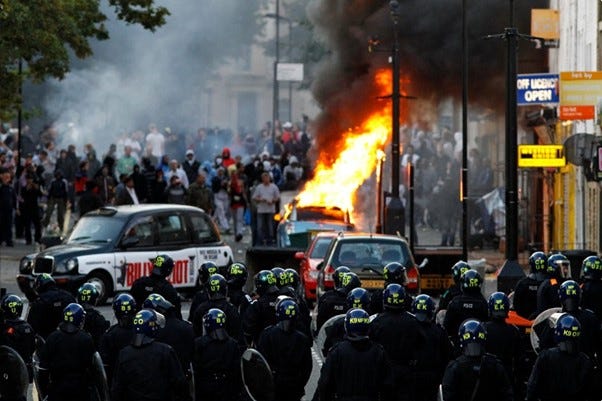
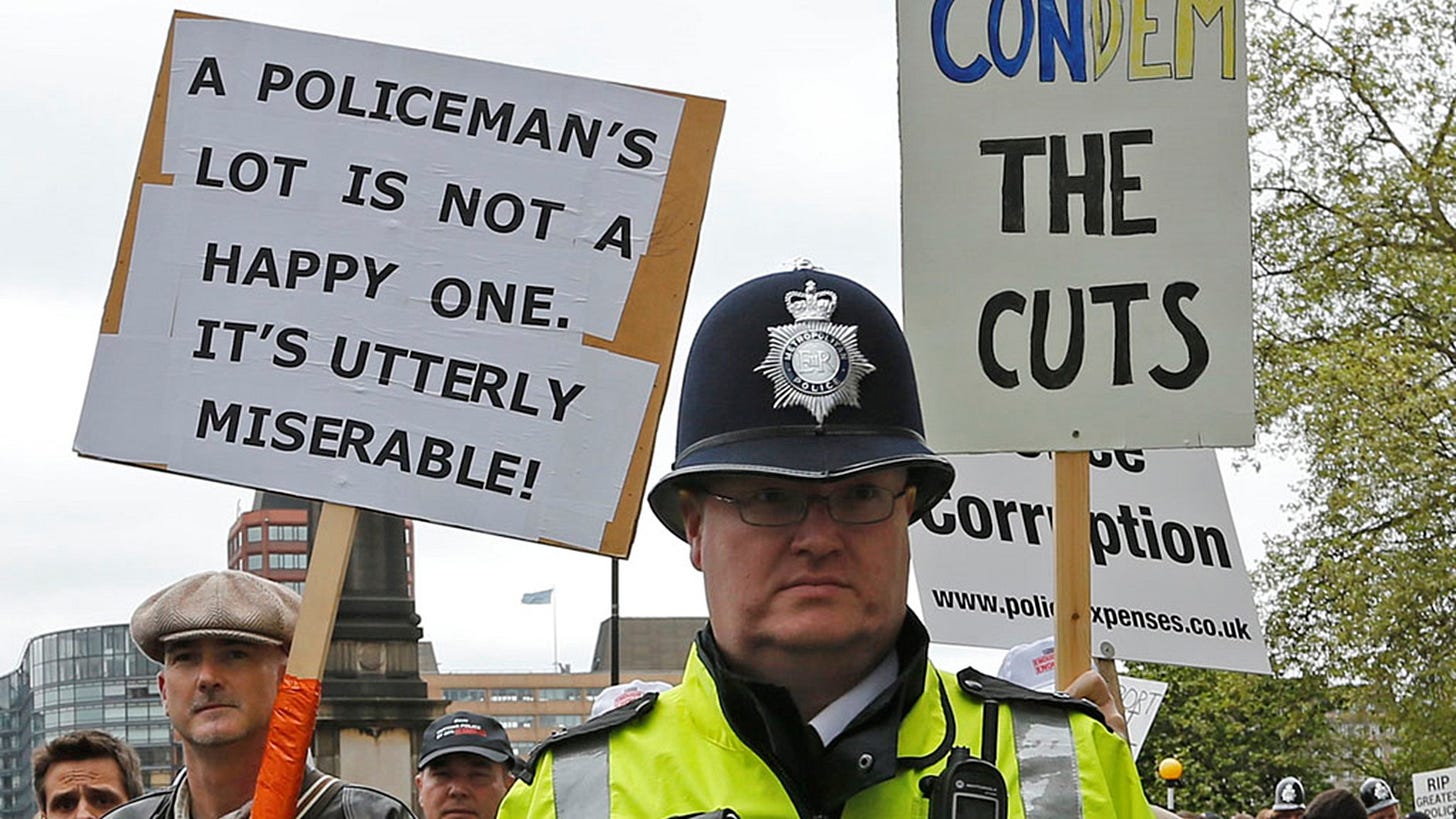
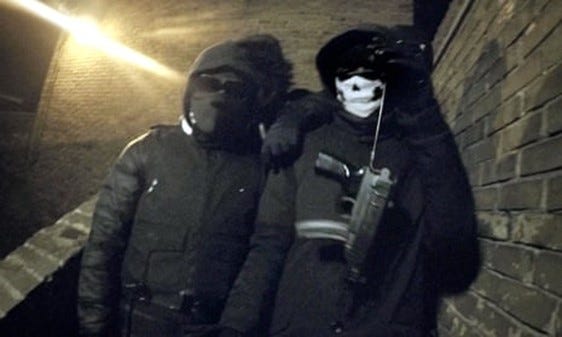
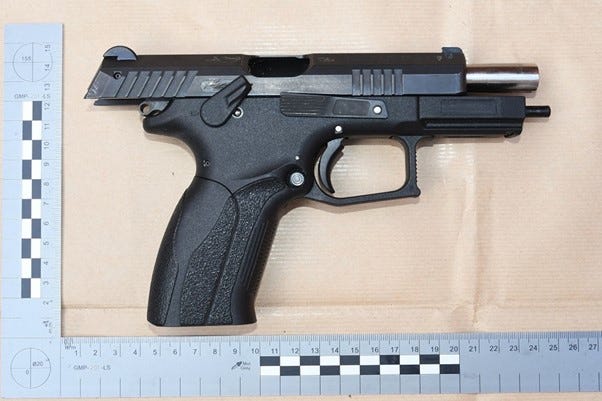
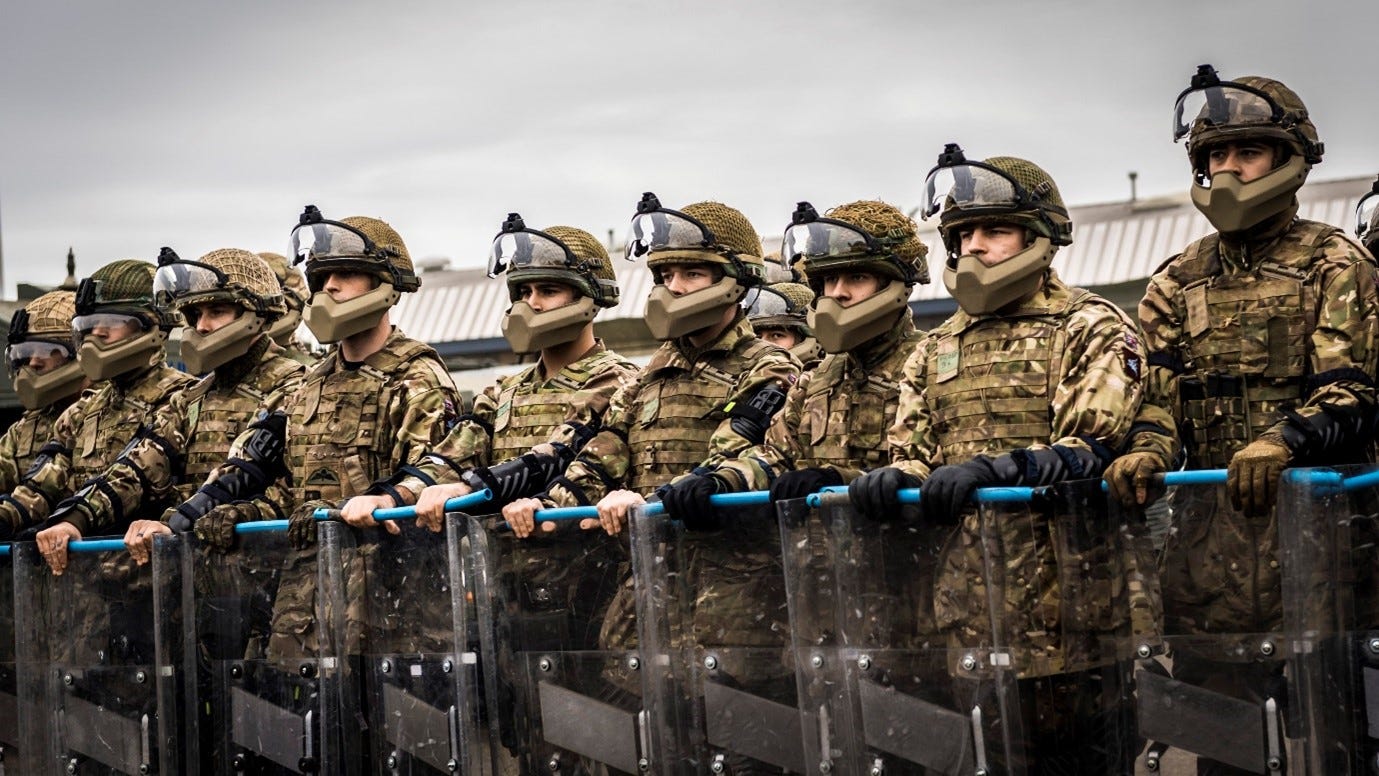
The NCA seem to fancy themselves as one of the intelligence agencies ... i doubt the sentiment is reciprocated.
I wasn’t overly impressed with NCA officers, bar a couple on a personal level.
What a thought provoking future history. It would be easy to dismiss it as pure fiction and highly unlikely to occur. However, who; at the turn of the 21st Century would have predicted the state of policing in the 2020’s? PCA’s, dubious local accountability, reduced terms and conditions, pay awards that failed to meet the needs of police recruits, denigration from social and all other forms of media. All this making the recruitment of quality officers almost impossible.
With all my heart I hope your paper remains a fictional one, but what if?